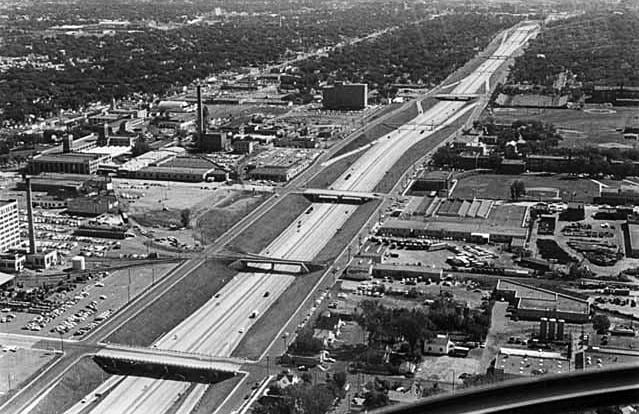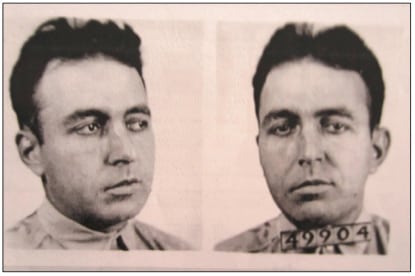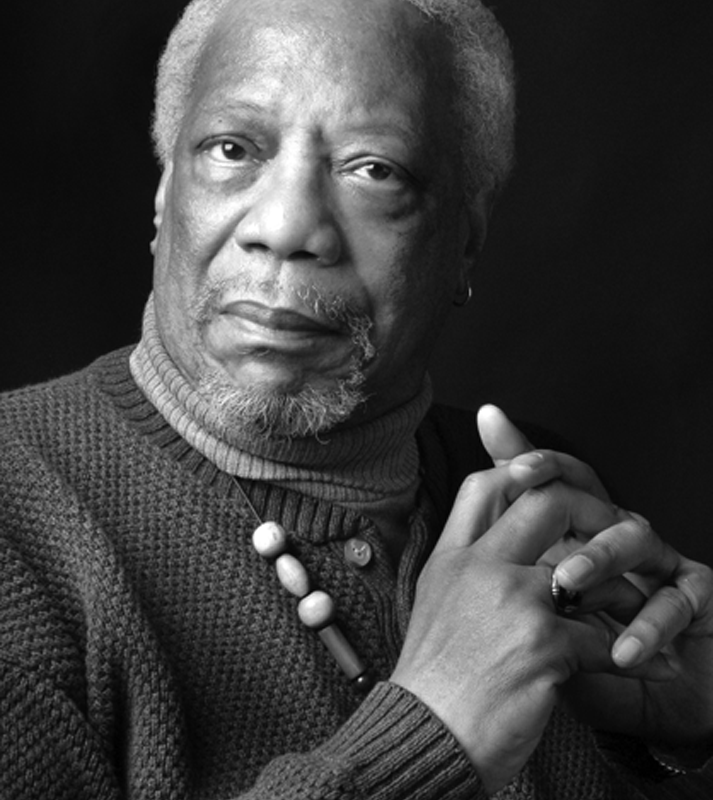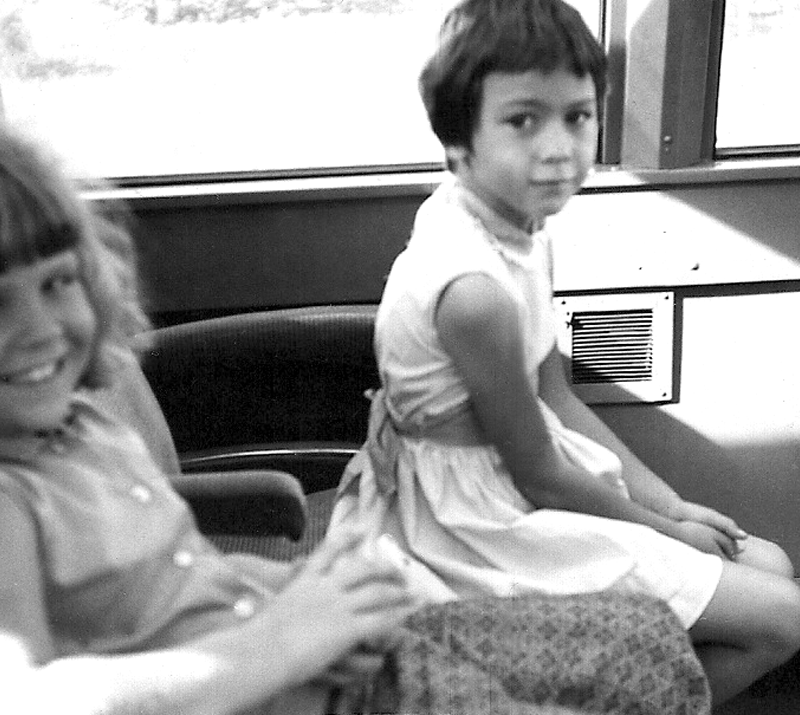
Workin’ on the Railroad— Dale Street Shops
2013
Driving through the intersection of Dale Street and Minnehaha Avenue, in the Frogtown district, you couldn’t help being impressed by the massive yellow-ochre brick building with the exceptionally tall glass block windows.

Bridge
2013
There’s no time in traffic on 35E to honor a place such as this—my old neighborhood in ruins. In one second my car wheels cover what was once my brothers’ bedroom with the nursery rhyme floor.

Swimming with the Sharks
2013
Among our family stories is one with a lesson: Don’t try swimming with the sharks.

Hats Off to Larry Ho: Saint Paul Poet and Politician
2013
Laurence “Larry Ho” Hodgson (1874–1937) was a unique combination of poet and politician, a prolific writer who produced thousands of poetic and prose works.

All Aboard!
2012
My dad James Melvin Young Sr. became a second generation “Red Cap Porter” when his uncle William A. Young retired circa 1949. Melvin was 23 years old when the Saint Paul Union Depot at 214 Fourth Street in Lowertown was the gateway to the world. Working there was the spark that ignited a love for world travel for my dad. There were approximately thirty-six Red Cap Porters employed at the Depot, all African American. Their red caps became synonymous with integrity and reliability. Their work was demanding.

The Brawl in Saint Paul
2012
During the Civil Rights movement, most youth felt that the leadership of their community was inadequate and didn’t speak to their concerns, and therefore they would “take matters into their own hands.” Little did they realize that their methods and tactics were causing more problems than they were solving, that they had the effect of polarizing the community; as a result, there were constant disputes and conflicts, stemming from those who thought they knew the most about what to do, how to do it, and who would do what about the problems that were plaguing the community.

Pig’s Eye Island Adventure
2012
When I was growing up near Mounds Park during the fifties and sixties, fresh milk was delivered to our stoop like clockwork; however, no one came to haul away the refuse. A big, rusty metal drum in our back yard received the trash instead. When it got full, my father lit it on fire. Items you couldn’t burn—bottles, cans, old plastic toys—were driven to the Pig’s Eye Island City Dump. My brother almost always got to go with Dad to the dump, a fact that he lorded over his little sisters. But sometimes we got to go too.

How Max Shulman Got to College
2012
Max Shulman (1919–1988) grew up in a Jewish community in Saint Paul’s Selby-Dale neighborhood. After graduating from Central High School, he earned a journalism degree from the University of Minnesota. His writings were invariably humorous and were published in novels and magazines. He eventually became a successful writer for theater and television. His novel Potatoes are Cheaper was a portrayal of life in the city in the late 1930s. Extract from Max Shulman, Potatoes Are Cheaper (Doubleday and Company, 1971): 1–4, 23.

Meridel LeSueur Recalls Swede Hollow Before Prohibition
2012
Patrick Coleman writes: "LeSueur was perhaps Minnesota’s most famous proletarian writer, so it is not surprising that she wrote about the humble people of Saint Paul’s Swede Hollow. The following selection was written during Prohibition, ushered in by passage of the Volstead Act in 1919." Extract from Meridel LeSueur, “Beer Town,” Life in the United States: A Collection of Narratives of Contemporary American Life from First-Hand Experience or Observation (Charles Scribner’s Sons, 1933); pages 31–33, 40.

The Mounds Theatre and Me
2012
I’ve lived in Dayton’s Bluff just a few blocks from the Mounds Theatre all my life, but not for the whole life of the Mounds Theatre. It was built in 1922, and I was born twenty-nine years later. The Mounds started out as a silent movie house. It was billed as “The Pride of Dayton’s Bluff.” It had a small stage for vaudeville acts. Local musicians played in an orchestra pit. The first “talkie” was shown at the Mounds in late March 1929—on what would eventually become my birthday. The movie was My Man, starring Fannie Brice. The Mounds was remodeled in the 1930s, receiving air conditioning, an exterior ticket booth, and a fancy marquee.

A Nostalgic Zephyr: William Hoffman on the Old Jewish West Side
2012
It is difficult to choose from Bill Hoffman’s writings because they are all so compelling. Street by street and door by door and character by character he documented an important piece of Saint Paul—Jewish life on the West Side flats—that no longer exists. Hoffman should be required reading for recent immigrants and for those who have forgotten that their families were once immigrants.

Gordon Parks Recalling 1920s Rondo
2011
Gordon Parks was an acclaimed artist who confronted poverty and racism with such creative grace that he became an internationally admired cultural icon long before his death in 2006 at age ninety-three. An accomplished photographer, writer, composer, musician, and film producer and director, Parks was born in Fort Scott, Kansas, in 1912, and later moved to Saint Paul, where he spent his formative years. His memoir, A Choice of Weapons, which describes his experiences from 1928 through 1944, was first published in 1966 and reissued in 1986 and 2010 by the Minnesota Historical Society Press.